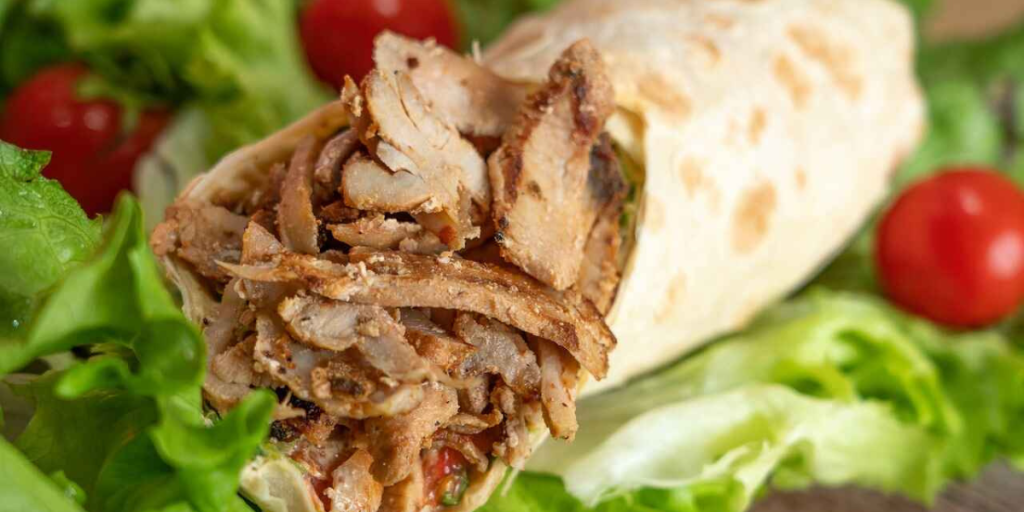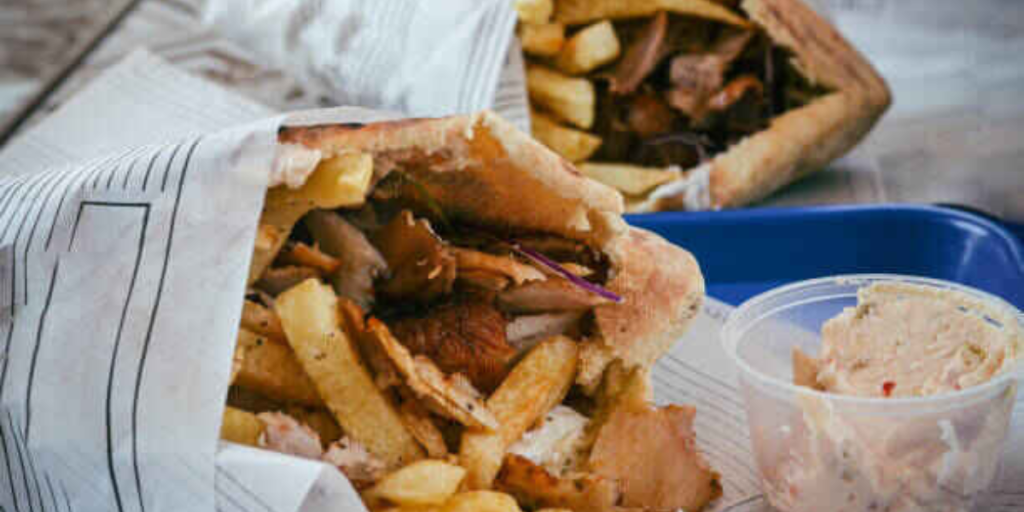Table of Contents
In the expansive world of global cuisine, certain dishes possess a unique ability to enchant taste buds and evoke culinary intrigue. Shawarma, originating from the Middle East, is one such dish that has transcended regional boundaries to become a beloved street food and culinary staple across diverse cultures. This article embarks on a flavorful journey to uncover the intricacies of shawarma, delving into its origins, preparation methods, regional adaptations, cultural significance, and the culinary impact that has made it a gastronomic sensation worldwide. At first glance, shawarma might seem like a simple street food, but its complexity lies in its rich history and the meticulous preparation that goes into each bite. Shawarma is more than just a meal; it is an experience that captures the essence of Middle Eastern cuisine. Understanding shawarma allows you to explore the depths of a dish that is both ancient and modern. Shawarma is a perfect example of how culinary traditions can evolve and adapt while retaining their core essence. By delving into the story of shawarma, you gain insights into the cultural and historical contexts that have shaped this iconic dish.
The origins of shawarma can be traced back to the Middle East, where it evolved from the traditional method of roasting meat on a spit. Historically, shawarma was made using lamb or mutton, but over time, it has come to include a variety of meats such as chicken, beef, and turkey. The meat is marinated in a blend of spices and herbs, then stacked on a vertical rotisserie and slowly roasted to perfection. The preparation of shawarma is an art that requires both skill and patience. The key to a great shawarma lies in the marinade, which typically includes a mix of spices such as cumin, coriander, paprika, turmeric, and cinnamon, along with garlic, lemon juice, and yogurt. This marinade infuses the meat with a deep, rich flavor and helps tenderize it. Shawarma is traditionally served in pita bread or flatbreads, accompanied by a variety of fresh vegetables and sauces. Common toppings include tomatoes, cucumbers, onions, and tahini or garlic sauce, each adding layers of texture and flavor that complement the succulent, spiced meat.
The Historical Roots

Shawarma’s historical roots extend to the Levant region, encompassing countries like Lebanon, Syria, Jordan, and Palestine. The term “shawarma” itself is derived from the Turkish word “çevirme,” signifying “turning” or “rotating.” This linguistic connection reflects the distinctive cooking technique associated with Shawarma, where seasoned meat is meticulously stacked on a vertical rotisserie and slow-cooked as it revolves.
The concept of vertically spit-roasting meat has ancient origins, possibly originating in the Ottoman Empire. Over time, this cooking method evolved, diffusing across the Middle East, with each region adding its unique flair to the dish.
The Art of Preparing

1. Meat Selection and Marination
At the core of a delectable Shawarma lies the meat. While lamb was the traditional choice, modern variations incorporate chicken, beef, or a combination of meats. The meat undergoes marination in a blend of spices, herbs, and sometimes yogurt to tenderize and infuse it with robust flavors. Common spices include cumin, coriander, paprika, turmeric, garlic, and cinnamon.
2. Vertical Spit Stacking and Slow Cooking
Once marinated, the meat is meticulously stacked onto a vertical rotisserie, forming an inverted cone. This arrangement ensures even cooking as the spit rotates. The gradual turning of the spit allows the outer layer of the meat to cook, with flavorful juices cascading down to baste the layers beneath. This slow-cooking process results in tender, succulent meat with an exquisite fusion of spices.
3. Complementary Ingredients and Condiments
It is typically served with an array of complementary ingredients and condiments, enriching its overall flavor profile. Standard accompaniments include tomatoes, cucumbers, onions, and lettuce. Condiments such as tahini, garlic sauce, or yogurt-based dressings are drizzled over the meat, elevating the taste and providing a creamy counterpoint to the savory, spiced meat.
Regional Varieties
1. Middle Eastern Shawarma
In its place of origin, Shawarma exhibits variations from one country to another. In Lebanon, for instance, It often features a blend of lamb and beef, commonly wrapped in flatbread or pita. In Turkey, the dish is recognized as “Döner Kebab” and is accompanied by unique elements such as sumac onions and pomegranate molasses.
2. European and American Interpretations
As Shawarma garnered global acclaim, it underwent adaptations to suit local palates. European renditions might incorporate a broader range of vegetables and sauces. In the Americas, especially in culturally diverse cities, It has found its place in fusion dishes, frequently served in tacos, wraps, or salads.
3. Asian Fusion
Parts of Asia have embraced Shawarma with enthusiasm, resulting in inventive fusions. In India, for example, It may take on a spicier dimension, aligning with the country’s preference for bold flavors. It’s not uncommon to find It joints coexisting with traditional street food stalls, illustrating the dish’s adaptability to diverse culinary landscapes.
Cultural Significance
Beyond its delectable taste and widespread popularity, It carries cultural significance in its regions of origin. In Middle Eastern countries, Shawarma transcends being merely a meal; it’s a communal experience. Families and friends gather at local Shawarma establishments to share a meal, fostering a sense of community. The preparation and consumption are interwoven with cultural traditions and celebrations, elevating it beyond a mere culinary delight.
Popular Culture

The global allure reached new heights thanks to an unexpected cameo in a blockbuster superhero film. In the post-credits scene of the 2012 film “The Avengers,” characters are seen relishing it after a strenuous battle. This seemingly casual moment propelled it into pop culture consciousness, piquing interest and contributing to its surge in popularity beyond its places of origin.
Health Considerations
While It undeniably offers a rich and satisfying culinary experience, it’s crucial to consider its nutritional aspects. The marination and cooking processes often involve the use of oils and fats, contributing to the overall calorie content. Opting for lean meats and being mindful of portion sizes can make Shawarma a part of a balanced diet. Additionally, choosing whole-grain wraps or opting for Shawarma bowls with an abundance of vegetables can enhance its nutritional profile.
Crafting Shawarma at Home
For those inclined to embark on a culinary adventure within their own kitchens, preparing Shawarma at home can be a gratifying experience. While replicating the vertical spit used in commercial settings may pose a challenge, the flavors of Shawarma can still be achieved using an oven or grill. Numerous recipes and online tutorials provide guidance for home cooks, detailing the marination, stacking, and cooking processes to achieve that perfect blend of flavors.
Conclusion
In conclusion, Shawarma is more than just a dish; it’s a culinary odyssey that spans continents and cultures. From its modest beginnings in the Middle East to its global prominence today, Shawarma has evolved while retaining its essence—a celebration of flavorful, slow-cooked meat served with an array of accompaniments and condiments. Whether enjoyed from a street vendor in Beirut, a food truck in New York City, or crafted at home, Shawarma continues to unite people through its enticing aromas and gratifying tastes. The next time you indulge in a meticulously wrapped Shawarma, relish not only the layers of meat and spices but also the rich tapestry of history and culture that this cherished dish brings to your table.





















